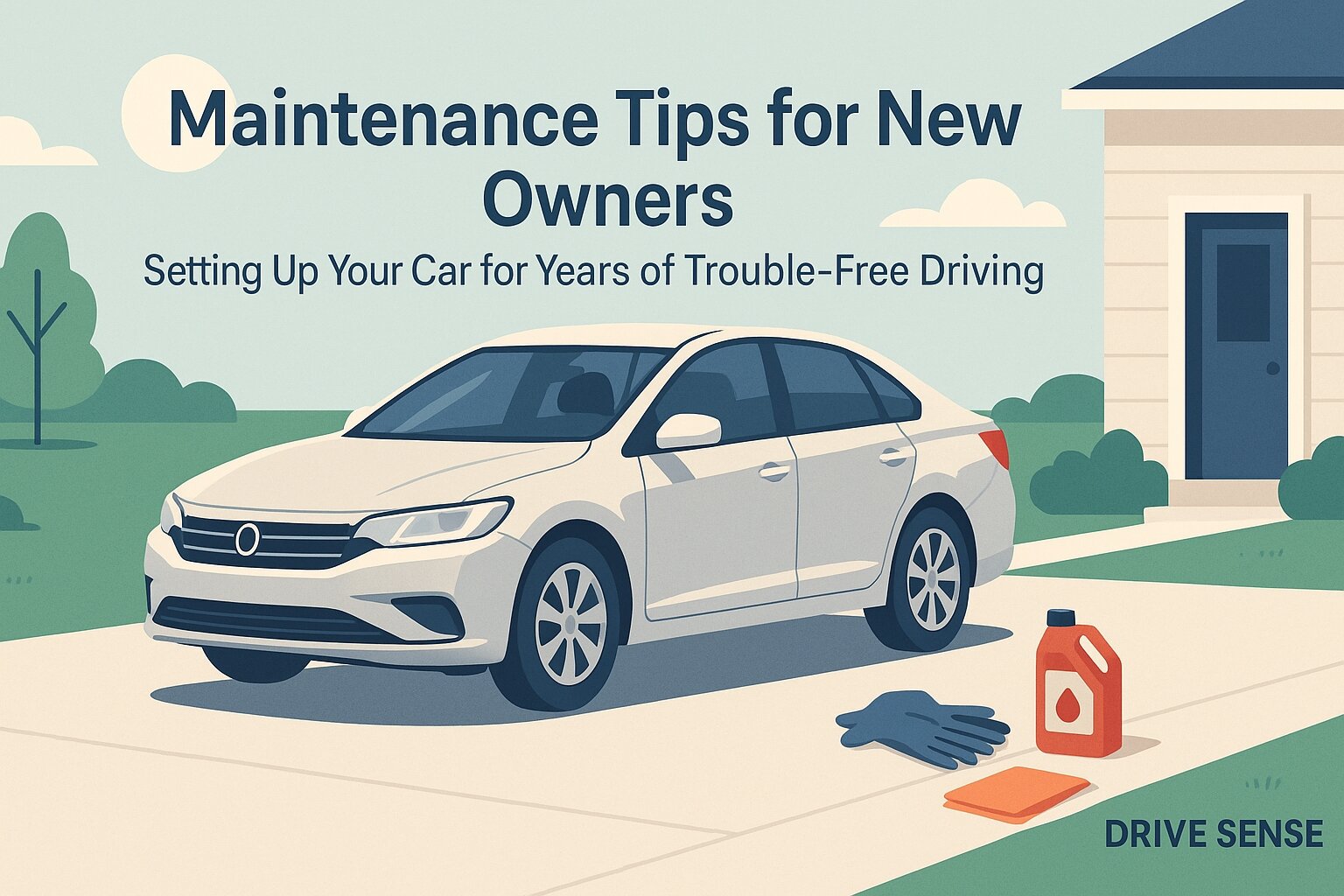Welcome to the Garage: The First Days with Your New Ride
There’s something satisfying about sliding behind the wheel of a new car. Whether it’s the faint scent of fresh plastics, the crisp click of the stalks, or the tautness in the steering, everything feels tight and eager—like a car stretching its legs for the very first time. But beneath that flawless paint and those untouched floor mats lies a mechanical heart that needs care, even in these honeymoon days. As someone who’s logged plenty of hours both wrenching and writing about cars in Chicago’s unpredictable climate, I can tell you: smart maintenance early on pays dividends down the road.
The Break-In: Why It Still Matters (Yes, Even in 2024)
Modern engines are built with tighter tolerances than those from a decade or two ago, but there’s still wisdom in treating your new car gently during the first 1,000 miles or so. Most manufacturers recommend varying your speed and engine RPMs—don’t just set cruise control at 70 mph for three hours straight. Let the engine experience different loads and conditions. This helps rings seat against cylinder walls, bearings mate properly, and lubricants circulate through every nook and cranny.
If you drive performance cars or trucks—think Mustang GT, Silverado 1500, Civic Type R—the break-in can be even more critical. Resist the urge to floor it right out of the dealer lot. Instead, sample the throttle gradually. I’ve seen folks skip this step and pay for it later with oil consumption issues or odd noises that never quite go away.
Fluids: The Lifeblood Worth Checking (And Changing)
Pop your hood every week or so. Not because you expect problems, but because it builds habits. Engine oil should always be at the correct level and color—fresh oil is amber or light brown; anything milky or dark after a few hundred miles is a red flag. Coolant reservoirs are usually translucent now, making checks easy even when cold.
Don’t ignore brake fluid or power steering (if your car still uses hydraulic assist). These aren’t common failure points on new cars, but I’ve seen factory assembly errors leave reservoirs underfilled. It takes two minutes to glance over these systems.
And while most automakers say modern oil can last 7,500 miles or more, I personally swap out that initial fill around 1,500–2,500 miles—especially on performance engines. There’s often more break-in metal shavings than you’d think.
Tire Pressure: Your Only Contact With Earth
This one gets overlooked constantly. Cars ship from factories with higher-than-normal tire pressures to prevent flat spots during transport. Dealers sometimes forget to adjust them at delivery. Grab a quality gauge (digital or analog—just not those cheap pencil types). Check all four tires when cold; compare with the sticker inside your driver’s door jamb.
Proper pressure isn’t just about safety—it transforms ride quality and handling. I remember picking up an F-150 that rode like an oxcart until I bled off 8 psi per tire back to spec. Don’t forget to check your spare if equipped; nothing sours a road trip like discovering it’s flat when you need it most.
Paint Protection: More Than Vanity
Chicago winters are brutal on paintwork—road salt clings everywhere, and gravel chips aren’t far behind. Even if you’re not obsessed with detailing, consider an early wax or ceramic coating application to add a sacrificial layer between your clear coat and Midwest grime.
A simple hand wash with pH-neutral soap every couple weeks will keep contaminants from etching into paint or trim. If you hear that gritty sound under your sponge on wash day—that’s real-world evidence those tiny particles are cutting into your finish.
Inside the Cabin: Where Buttons Meet Big Screens
Today’s cars pack as much tech as some living rooms—touchscreens, heated seats, wireless chargers, adaptive cruise systems. Take an hour to thumb through your owner’s manual (yes, even if you’re not lost). You’ll learn which features need periodic attention—a navigation map update here, recalibrating lane-keep assist there.
If you notice sticky buttons or slow responses from infotainment screens out of the gate, don’t assume it’ll improve with time; bring it up during your first service visit while it’s under warranty.
First Service Visit: Don’t Skip It—Even If Nothing Feels Wrong
The initial service appointment is about more than an oil change; dealers check for recalls and software updates you might not even know about. Some systems (like variable valve timing actuators or transmission control modules) may receive tweaks that improve drivability and longevity.
Keep detailed records—even digital photos of receipts help if warranty questions crop up later.
The Value of Listening: Every Car Talks
Your car will develop its own soundtrack over time—the muted whir of direct injection pumps in a turbo-four, the subtle tick-tick of electric cooling fans cycling after shutdown. Learn what “normal” sounds like for your model.
Unusual vibrations through the steering wheel or pedals? Rattles from trim panels? Note them early so you have a baseline—and don’t be shy about asking service advisors to investigate persistent oddities.
Batteries Aren’t Just For Starting
Start-stop systems in many modern vehicles place extra load on both batteries and starters. If you plan lots of short trips (common in city driving), consider investing in a quality trickle charger to keep voltage healthy—especially during winter storage.
Wipers & Weatherstripping: The Unsung Heroes
A streaky windshield isn’t just annoying—it’s dangerous at night or during heavy rain. Replace wipers at least once per year; cheap ones rarely last through two Chicago seasons.
Run your hand along door seals occasionally; any tackiness or visible wear warrants a spritz of silicone spray to keep them supple and leak-free.
A Word On Recalls & Technical Service Bulletins
No manufacturer is immune to recalls—not Ford, not Toyota, not Tesla. Register your new vehicle with NHTSA.gov to get notifications directly. Technical Service Bulletins (TSBs) are less urgent but often address minor quirks before they become headaches.
Final Thoughts From Under The Hood
The thrill of new ownership never really fades for gearheads like me—but treating every car like it’s special pays off whether you keep it ten years or trade up sooner. Early diligence means fewer surprises later—and lets you enjoy every mile with confidence.
Stay curious about how things work; listen closely when something feels off; don’t wait for warning lights before poking around under the hood. That blend of routine care and mechanical empathy keeps new cars feeling factory-fresh long after their showroom shine fades.

